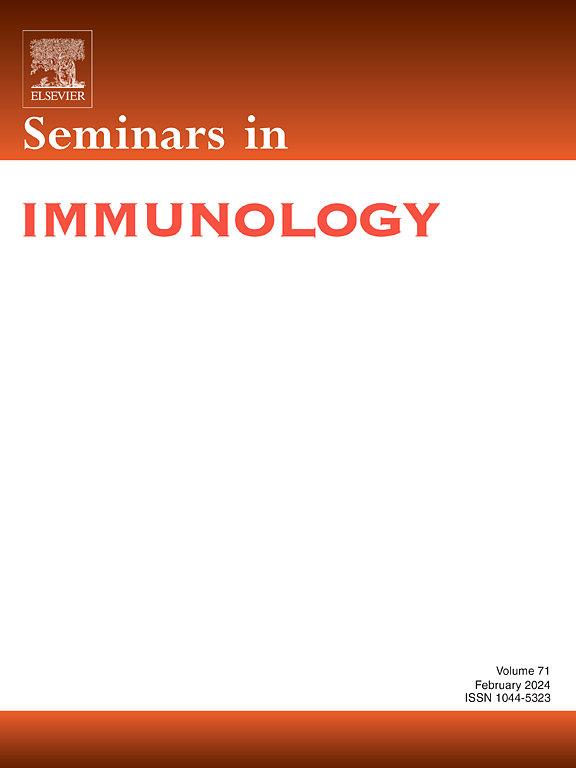From immunobiology to intervention: Pathophysiology of autoimmune encephalitis
IF 7.4
2区 医学
Q1 IMMUNOLOGY
引用次数: 0
Abstract
Autoimmune encephalitides (AEs) are neurological disorders caused by autoantibodies against neuronal and glial surface proteins. Nearly 20 years after their discovery, AE have evolved from being frequently misdiagnosed and untreated to a growing group of increasingly well-characterized conditions where patients benefit from targeted therapeutic strategies. This narrative review provides an immunological perspective on AE, focusing on NMDAR, CASPR2 and LGI1 encephalitis as the three most common forms of AE associated with anti-neuronal surface autoantibodies. We examine the autoreactive B cell subsets, the tolerance checkpoints that may fail, and the known triggers and predispositions contributing to disease. In addition, we discuss the roles of other immune cells, including T cells and microglia, in the pathogenesis of AE. By analyzing therapeutic strategies and treatment responses we draw insights into AE pathophysiology. Written at a time of transformative therapeutic advancements through cell therapies this work underscores the synergy between detailed immunological research and the development of innovative therapies.
从免疫生物学到干预:自身免疫性脑炎的病理生理学
自身免疫性脑炎(ae)是由针对神经元和胶质表面蛋白的自身抗体引起的神经系统疾病。在AE被发现近20年后,AE已经从经常被误诊和未经治疗发展成为一组越来越多的疾病,患者从有针对性的治疗策略中受益。本文从免疫学角度对AE进行综述,重点介绍了NMDAR、CASPR2和LGI1脑炎这三种与抗神经元表面自身抗体相关的AE最常见的形式。我们检查了自身反应性B细胞亚群,可能失败的耐受性检查点,以及导致疾病的已知触发因素和易感性。此外,我们还讨论了包括T细胞和小胶质细胞在内的其他免疫细胞在AE发病机制中的作用。通过分析治疗策略和治疗反应,我们深入了解AE的病理生理学。在通过细胞疗法的变革性治疗进步的时代,这项工作强调了详细的免疫学研究和创新疗法开发之间的协同作用。
本文章由计算机程序翻译,如有差异,请以英文原文为准。
求助全文
约1分钟内获得全文
求助全文
来源期刊

Seminars in Immunology
医学-免疫学
CiteScore
11.40
自引率
1.30%
发文量
50
审稿时长
89 days
期刊介绍:
Seminars in Immunology is a specialized review journal that serves as a valuable resource for scientists in the field of immunology. The journal's approach is thematic, with each issue dedicated to a specific topic of significant interest to immunologists. It covers a wide range of research areas, from the molecular and cellular foundations of the immune response to the potential for its manipulation, highlighting recent advancements in these areas.
Each thematic issue is curated by a guest editor, who is recognized as an expert in the field internationally. The content of each issue typically includes six to eight authoritative invited reviews, which delve into various aspects of the chosen topic. The goal of these reviews is to provide a comprehensive, coherent, and engaging overview of the subject matter, ensuring that the information is presented in a timely manner to maintain its relevance.
The journal's commitment to quality and timeliness is further supported by its inclusion in the Scopus database, which is a leading abstract and citation database of peer-reviewed literature. Being indexed in Scopus helps to ensure that the journal's content is accessible to a broad audience of researchers and professionals in immunology and related fields.
 求助内容:
求助内容: 应助结果提醒方式:
应助结果提醒方式:


